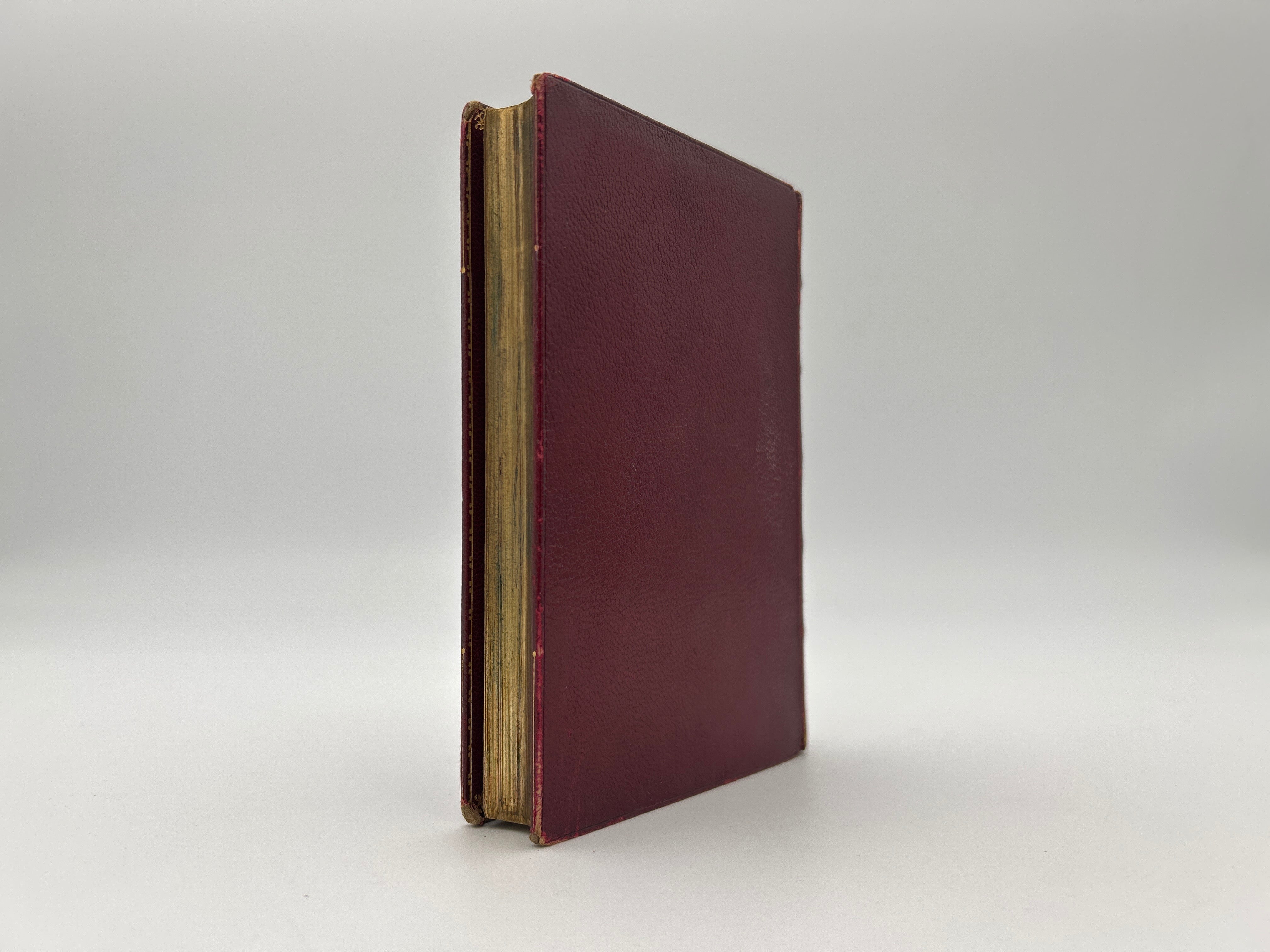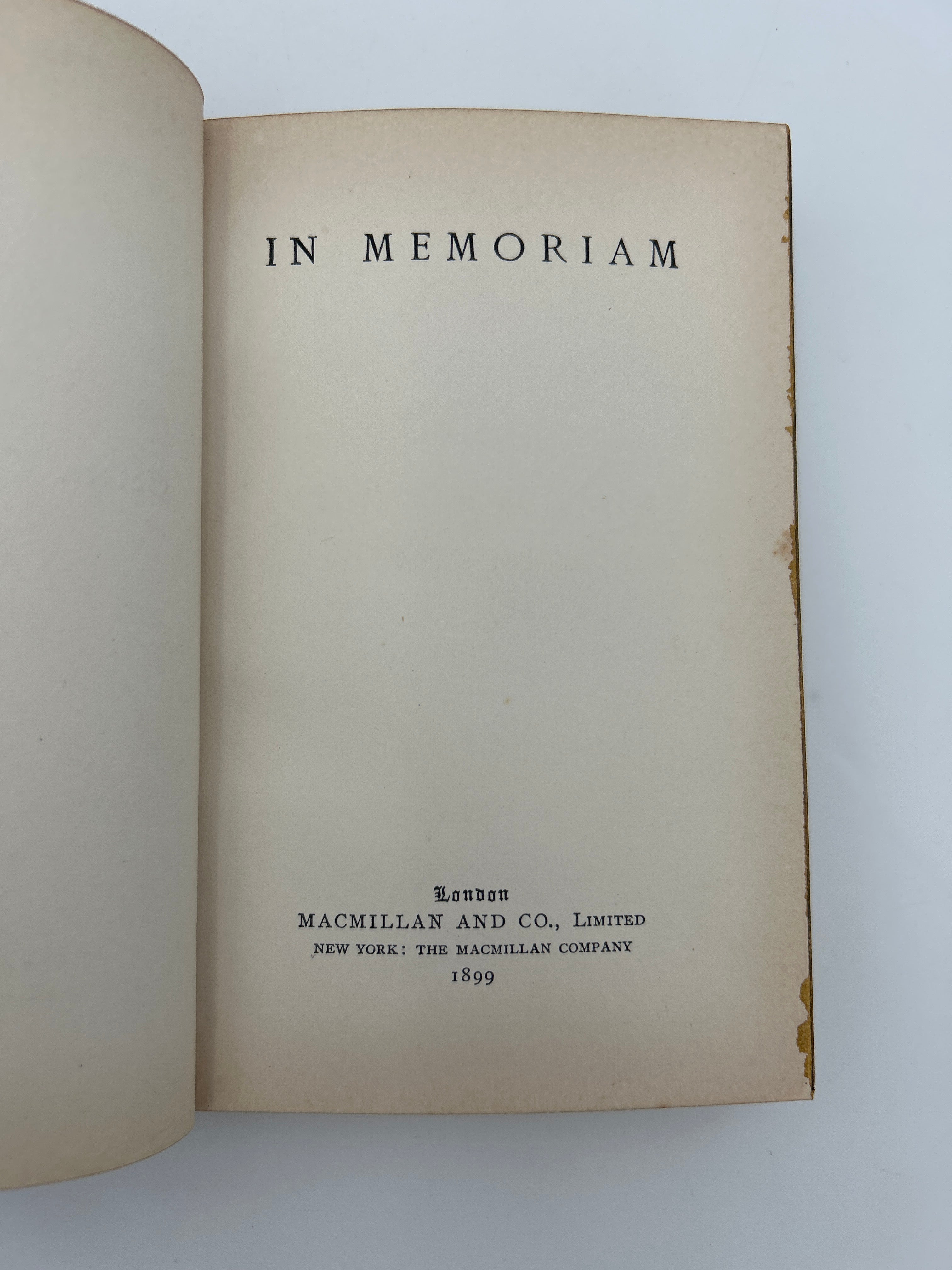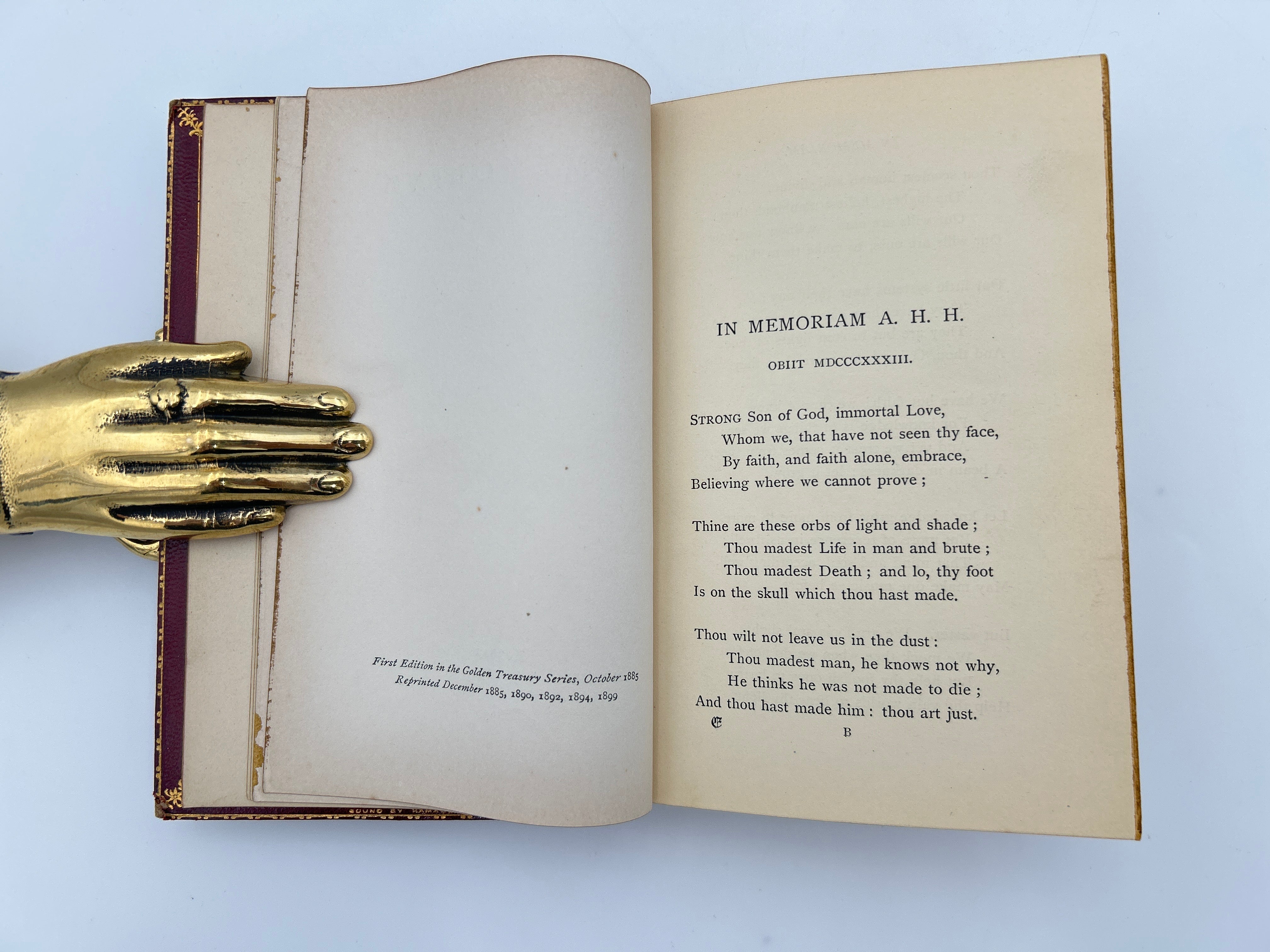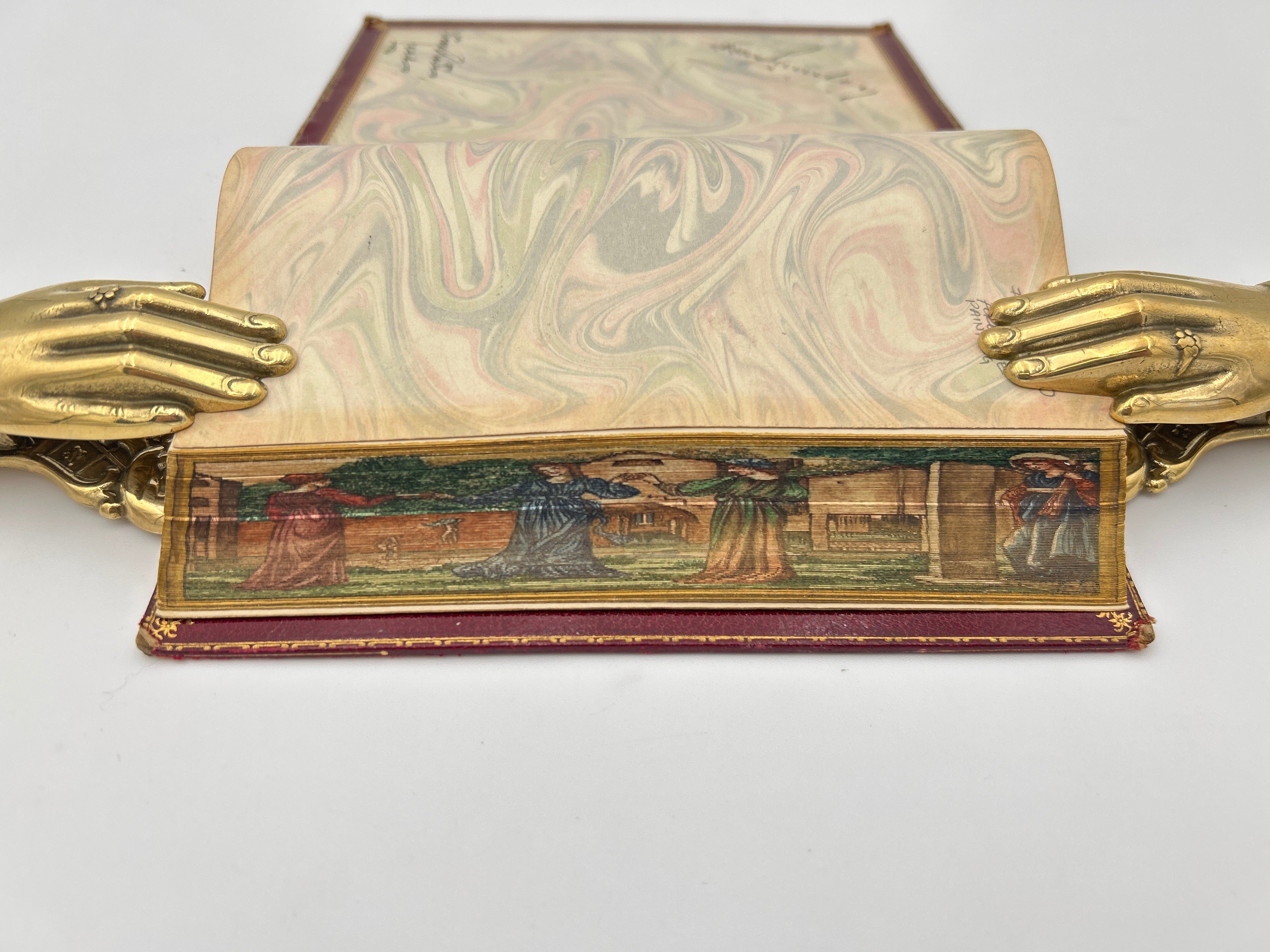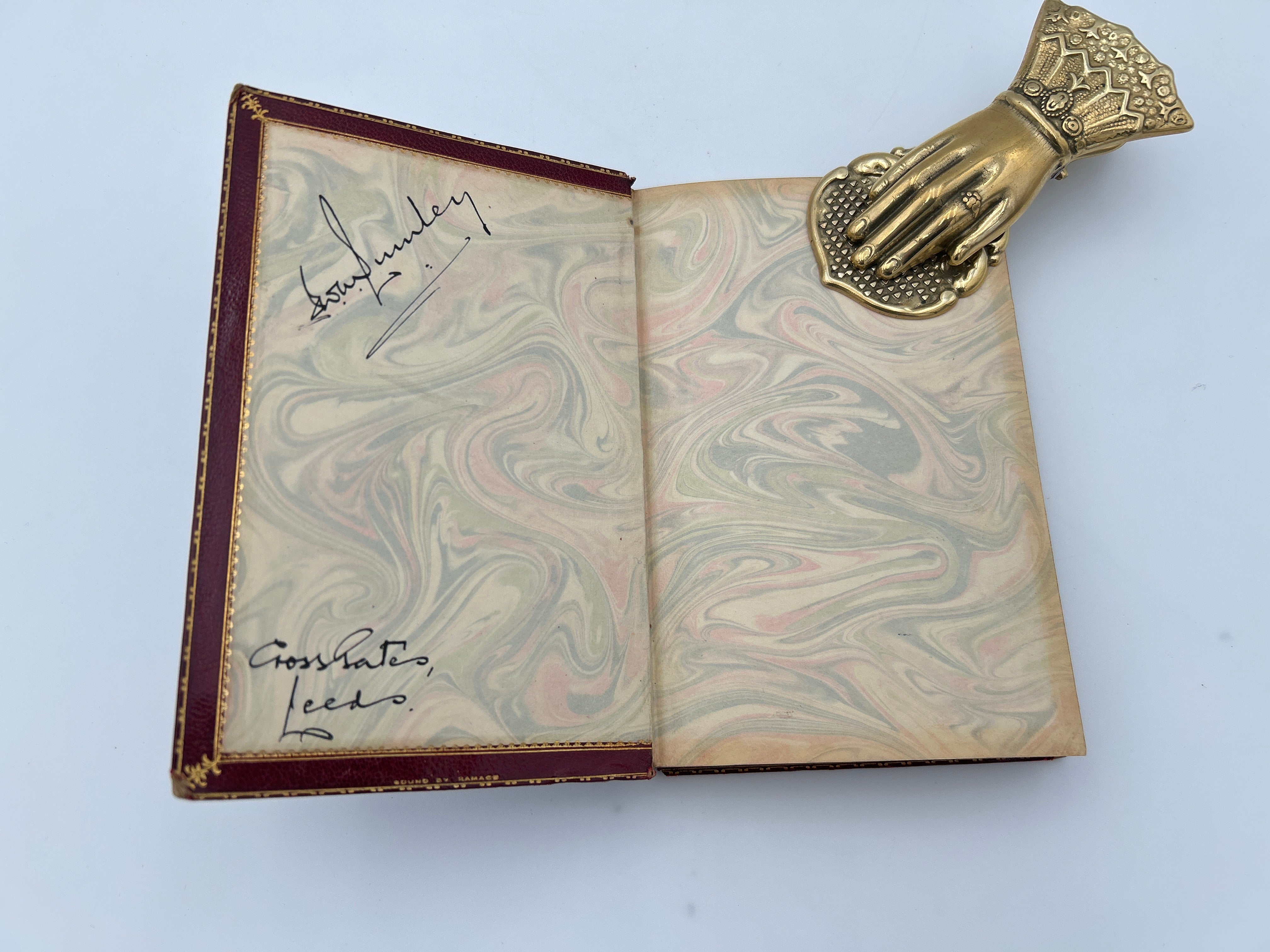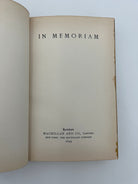In Memoriam
Couldn't load pickup availability
5B Tennyson, London, 1899. Fore Edge Painting.
Notes
In Memoriam, written by Alfred, Lord Tennyson, is a deeply emotional and reflective poem that was published in 1850. It consists of 133 cantos and was written in response to the death of Tennyson’s close friend, Arthur Henry Hallam, who passed away suddenly in 1833. The poem explores the themes of grief, loss, the search for meaning, and the reconciliation of faith with the reality of death. Tennyson uses In Memoriam as a way to process his overwhelming sorrow, but it also represents a journey toward acceptance, finding hope in the belief that death is not an end but a transition. The work’s structure is meditative and philosophical, grappling with questions about the afterlife, the nature of God, and the possibility of human immortality.
In Memoriam is often considered one of Tennyson's finest works, praised for its lyrical beauty, emotional depth, and philosophical insights. The poem is not only a personal reflection on the loss of a dear friend but also a universal exploration of the human experience with death and mourning. It offers a gradual progression toward spiritual understanding and peace, concluding with a sense of divine reassurance. The famous lines "‘Tis better to have loved and lost / Than never to have loved at all" encapsulate the poem's ultimate message: that love, though painful, is a vital part of life that transcends loss and continues to shape the soul.
Description
Red leather binding with five raised bands. Gilt lettering in the second compartment. All edges gilt. Gilt turn ins with marbled endpapers. Fore edge painting.

